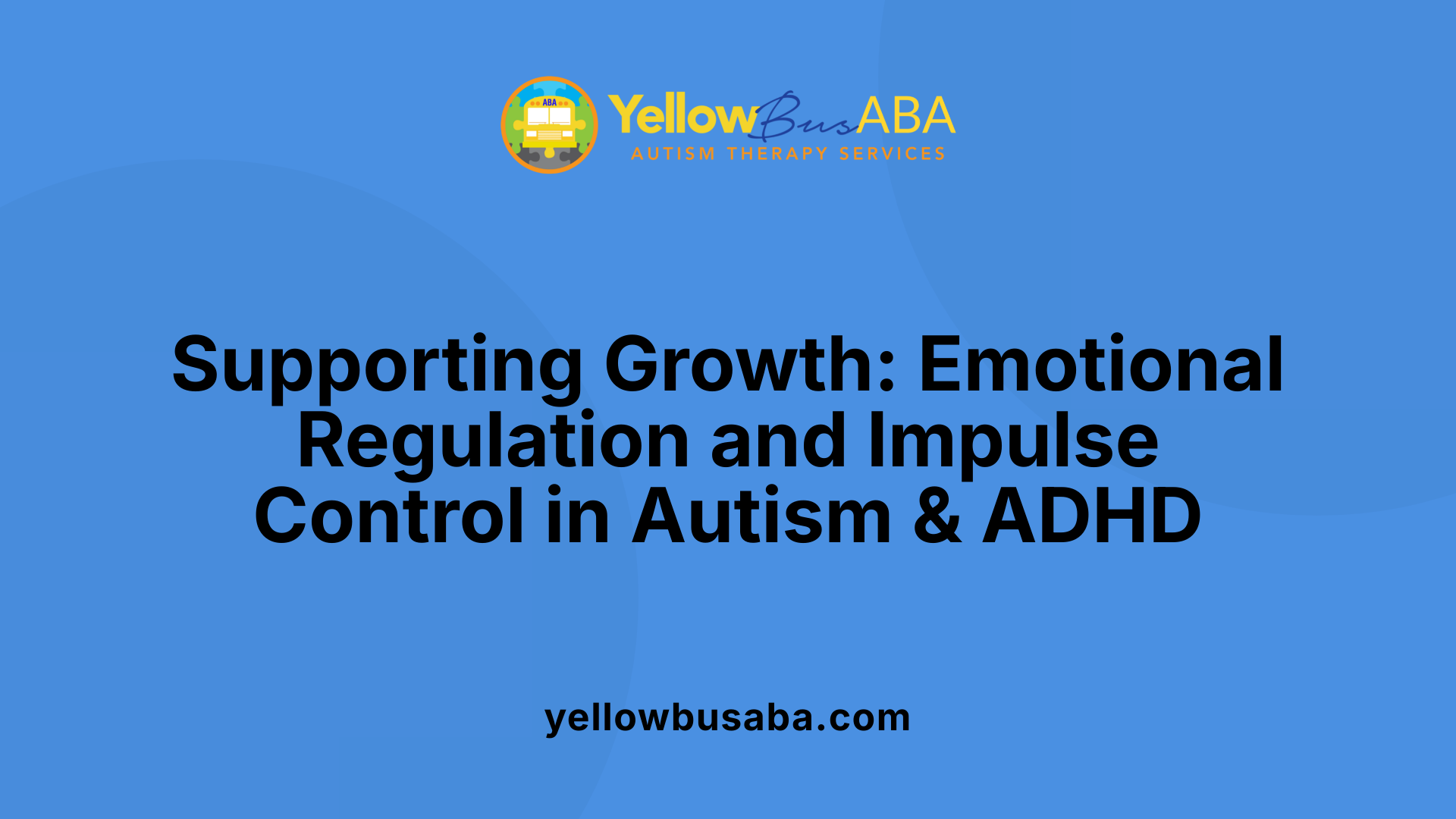Understanding the Critical Role of Patience and Persistence
In applied behavior analysis (ABA) therapy, patience and persistence are not just virtues—they are fundamental to driving meaningful and lasting behavioral change. These qualities underpin every aspect of effective treatment, from establishing rapport to achieving long-term developmental milestones. This article explores why patience and persistence are essential, how they facilitate therapeutic success, and practical strategies for caregivers and therapists to cultivate these qualities in their practice.
Building Trust and Rapport Through Consistent Engagement

What is the role of rapport in ABA therapy?
Building rapport is fundamental to the success of ABA therapy. It involves creating a genuine, comfortable connection between the therapist and the child, often called pairing. When trust exists, children are more willing to engage, learn new skills, and adapt behaviors. Successful pairing can be seen when a child is excited to see the therapist or shows signs of distress when the session ends, indicating a strong bond.
How do therapists build rapport with children?
Therapists use various methods to develop a trusting relationship. They often engage children in activities they enjoy, such as playing with their favorite toys or participating in outdoor outings. These activities serve as natural reinforcers and help gather insights into the child's preferences and behaviors. Creating a safe, friendly environment through games and playful interactions further enhances trust and session productivity.
Patience and persistence are vital for building this connection, especially for children with autism spectrum disorder (ASD), ADHD, or similar conditions. Therapists avoid restrictive practices and instead focus on positive reinforcement, which encourages cooperation and mutual respect. Over time, engaging in enjoyable activities strengthens the emotional bond and lays a solid foundation for effective therapy.
How do patience and persistence impact the development of trust?
The process of developing trust depends heavily on consistency and understanding. Patience is crucial because behavior change and skill development often take time, particularly for children with complex needs. By consistently participating in activities they like, using reinforcement, and maintaining a calm, positive attitude, therapists demonstrate their commitment and reliability.
These qualities help children feel safe and respected, making them more open to trying new behaviors and skills. Repeated positive interactions foster comfort and attachment, which are critical for long-term progress in therapy. For children with ADHD, practicing patience also helps develop impulse control, emotional regulation, and frustration tolerance, all of which contribute to stronger ties with their therapist and better outcomes.
In essence, patience and persistence are the cornerstones of building a trusting relationship, creating an environment where children feel valued and motivated to participate actively in their journey toward growth and independence.
Techniques to Cultivate Patience and Persistence

What techniques can be used to cultivate patience and persistence in ABA practice?
Building patience and persistence in ABA therapy involves multiple strategic approaches. Consistent effort and applying these techniques across different settings help ensure long-term success.
One effective method is the use of positive reinforcement. Tailoring rewards and incentives to each child's interests encourages them to keep trying, even when faced with challenges. For example, providing a favorite toy or engaging in preferred activities as a reward can motivate children to persevere.
Data collection and analysis are crucial. Monitoring progress allows therapists and caregivers to identify what works best and make necessary adjustments. This ongoing process helps maintain motivation and provides insights into setbacks, enabling a constructive approach to overcoming difficulties.
Creating individualized treatment plans ensures that strategies suit each child's unique needs, fostering consistent progress. Clear communication between therapists, parents, and children helps build understanding and engagement, reinforcing the child's willingness to persist.
In addition, practicing skills in natural environments, such as outdoor play or everyday routines, helps children generalize learned behaviors. Routine and structured activities create predictable settings where children can succeed and build confidence.
Incorporating structured routines and opportunities for generalization supports the development of patience and resilience. These strategies promote steady progress, helping children develop emotional regulation, impulse control, and perseverance—all essential skills for long-term growth.
Patience and Persistence as Pillars of Long-Term Change

Why are patience and persistence vital for achieving long-term behavioral change in autism care?
Patience and persistence are essential components of effective autism therapy because they support enduring change despite the slow pace of progress often seen with developmental or behavioral challenges. When working with children who have autism, caregivers and therapists understand that behavioral modifications, skill development, and emotional regulation take time. Patience allows them to maintain hope and a positive outlook, even when immediate results are not apparent.
Furthermore, these qualities enable ongoing effort without frustration or burnout. Small improvements, such as increased communication or better social interaction, are celebrated as signs of progress. Persisting through setbacks promotes resilience and helps reinforce new behaviors, gradually replacing problematic ones. Since behavior change can require consistent practice over several months or even years, patience and persistence ensure that both children and caregivers stay motivated and committed.
Research indicates that creating lasting habits may extend beyond 66 days of repeated practice. Therefore, ongoing effort and a long-term perspective are critical. By fostering a compassionate, steady approach, therapists can build trust with children, laying the groundwork for meaningful, sustained growth in skills like impulse control and emotional regulation. Ultimately, these qualities help children develop independence, improve their social interactions, and enjoy a higher quality of life.
Supporting Behavioral Development in Children with Autism and ADHD

Why are building emotional regulation and impulse control important?
Developing emotional regulation and impulse control is crucial for children with autism and ADHD. These skills help them manage their reactions to stimuli, reduce impulsive behaviors, and navigate social situations more effectively. Since the maturation of the prefrontal cortex—the brain region responsible for self-control and planning—occurs gradually, children often need structured support and practice.
Activities like calming exercises, patience-building tasks, and positive reinforcement are used to strengthen these skills. When children learn to tolerate frustration and wait their turn, they build resilience and confidence in handling challenging situations.
How can a supportive environment promote growth?
Creating a safe, engaging environment is vital. Therapists often use games, outdoor activities, and social interactions aligned with the child’s interests to foster trust and cooperation. Play-based methods, such as using toys or outdoor outings as rewards for good behavior, help children associate positive feelings with learning. This context reduces anxiety and encourages engagement, which is essential in building lasting behavioral change.
What is the neuroscientific basis for patience and persistence benefits?
Research shows that the development of impulse control and emotional regulation is linked to the growth of the prefrontal cortex. This brain area matures slowly, often into early adulthood, which means children naturally have difficulty with patience and emotional self-management.
Implementing behavioral exercises that promote patience, like practicing waiting or delayed gratification, can support neural development in these areas. Over time, consistent practice and persistent effort can lead to improvements in self-regulation and reduce neurological differences, especially in children with ADHD.
By fostering these skills through patience and persistence, caregivers and therapists help children develop long-term coping mechanisms. This approach not only addresses immediate behavioral challenges but also lays the foundation for emotional resilience and independence.
| Aspect | Focus | How it supports development |
|---|---|---|
| Emotional regulation | Managing reactions | Mitigates negative responses, enhances social skills |
| Impulse control | Delaying gratification | Supports decision-making, reduces impulsivity |
| Patience and persistence | Long-term effort | Builds resilience, promotes neural growth |
| Safe environment | Trust and comfort | Encourages engagement and learning |
| Practice exercises | Deliberate practice | Facilitates brain development and adaptive skills |
Long-Term Benefits and Broader Impacts of Patience and Persistence in ABA

How do patience and persistence impact therapy milestones and overall effectiveness?
Patience and persistence are fundamental traits that deeply influence the success of ABA therapy. These qualities help children and therapists stay committed to the process, enabling consistent engagement with learning activities despite initial challenges or slow progress. When caregivers and therapists demonstrate patience, children are more likely to feel safe and supported, which fosters trust and cooperation.
Persistent efforts allow for gradual skill development, such as improved communication, better social interactions, and reduced problematic behaviors. This steady progress reinforces motivation and resilience, helping children overcome setbacks and stay motivated over time.
Moreover, using tailored strategies that respect each child's unique pace ensures that therapy milestones, like increased independence and emotional regulation, are achieved more effectively. The ongoing application of patience and persistence ensures that therapy is not just about immediate improvements but also about creating lasting, meaningful change.
Enhancement of social and independence skills
Building social skills and independence is a primary goal in ABA, and patience plays a crucial role here. Recognizing that social skills develop gradually, caregivers and therapists must persist through setbacks and continue to introduce new skills at a manageable pace.
Activities like play and outings are used as natural reinforcers, which further strengthen the child's motivation. Consistent reinforcement of positive behaviors fosters confidence, leading to greater independence in daily tasks.
Stress reduction and emotional well-being for caregivers
Practicing patience can significantly reduce stress levels for caregivers and therapists. When progress is slow, frustration can mount, but a patient mindset helps maintain a supportive environment. This approach reduces caregiver burnout and promotes a positive, encouraging atmosphere that benefits the child's development.
Overall effectiveness and success in therapy
The cumulative effect of patience and persistence enhances the overall outcomes of ABA therapy. As behavior change often takes time, these qualities ensure that efforts are sustained, increasing the likelihood of meeting long-term goals. Consistent efforts, parental involvement, and ongoing communication with therapists create a collaborative environment where progress is steadily made.
In conclusion, patience and perseverance are more than virtues; they are essential strategies that underpin the success of ABA therapy. Their influence extends beyond immediate behavior changes to long-lasting improvements in social skills, independence, and emotional resilience.
Cultivating Resilience for Long-Term Success
The journey of behavioral change and development in children with autism, ADHD, and other needs is long and complex, but rooted in the unwavering qualities of patience and persistence. These qualities foster trust, encourage ongoing effort, and support incremental progress, ultimately leading to meaningful and enduring improvements. By actively practicing and nurturing patience and persistence, therapists, caregivers, and children create a positive, supportive environment where growth is possible. This resilient approach not only enhances immediate therapy outcomes but also builds a foundation for lifelong skills in emotional regulation, social interaction, and independence, ensuring that behavioral development is sustainable and impactful.
References
- The Importance of Building Rapport in ABA - Behavior Nation
- Impact of Applied Behavior Analysis (ABA): My Personal Experience
- Setting Realistic Goals: What to Expect From Cleveland ABA ...
- The Brain - ABA Interventions
- 7 Essential Rules of ABA Therapy You Should Know |
- Integrating ABA Techniques into Daily Routines: A Guide for Parents
- ABA Therapy Techniques: Effective Strategies for Autism Support
- The Importance of Building Rapport in ABA - Behavior Nation
- Learn the Secrets to Effective Rapport Building in ABA Therapy
- The ABCs of ABA: What is Pairing & Building Rapport?



.jpg)

.avif)
